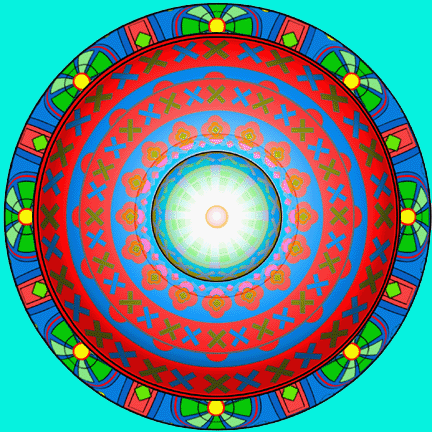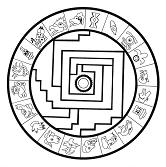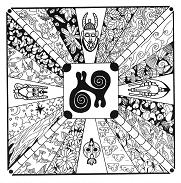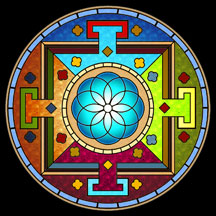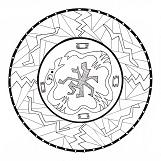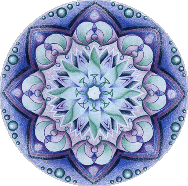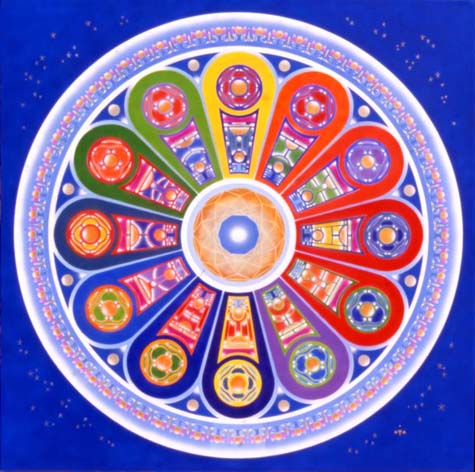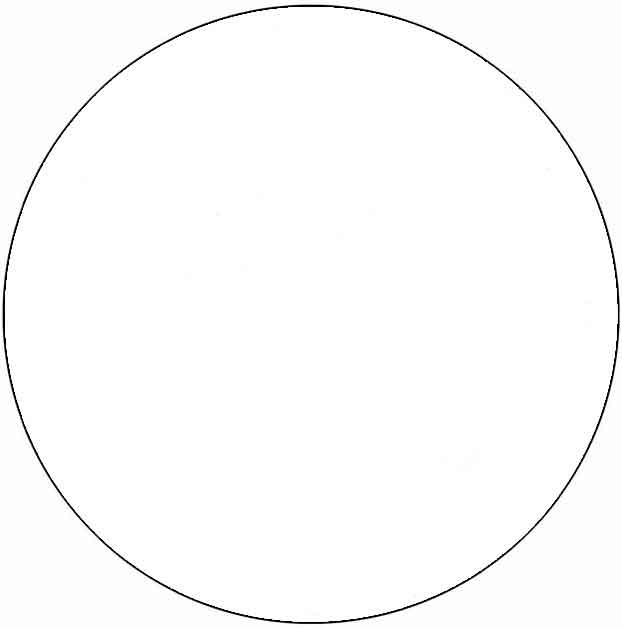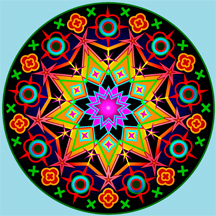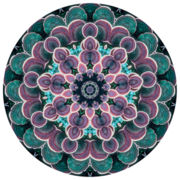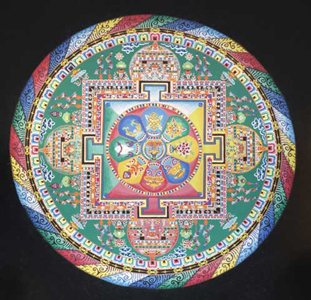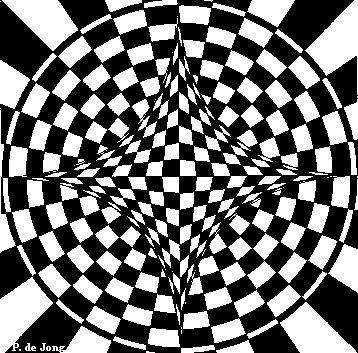| Mandalas Watch a slideshow from the BBC: Mandalas (Requires Flash 6 player - download here) Mandalas have been used in all cultures and all religious traditions for a variety of rituals and as "sacred art". Sacred art is imagery intended to uplift the mind to the spiritual. From every continent there are cultures that have a "mandala" tradition. From healing to teaching, meditation to story-telling, mandalas are important pieces of art from all corners of the earth. Some of the earliest pieces of art are mandalas and are found in all cultures which bring us together as people. Some of these mandalas, because they were so special, were built into architecture as bricks and mortar, or into stained-glass. Some were created into pieces of colored-tile called mosaics. Some are made from colored sand and built by Tibetan monks as a spiritual and religious ritual every year that takes two to three weeks to create and then the monks sweep up their art and pour the sand into a nearby river as part of the ritual. Some mandalas are built like labyrinths (some were garden mazes) for pilgramages or for a dwelling place of the deities. The mystical mandalas of European traditions are familiar to many who appreciate the Celtic mandalas that bring them luck. Or there is the Labyrinth in the Chartres Cathredral's meandering path that brings you to a center point. The Native American dream catcher is a mandala that catches the bad dreams and allows the dreamer to have good dreams. Orthere's the medicine wheel of the Native Americans such as the Navajos for healing. Hildegarde of Bingen, a 12th century nun recorded her inspired visions in mandala pantings to express the unity of darkness and lightness. All mandalas have one thing in common, however, they were meant to bring us to a positive place in life by uplifting us in a positive way. Mandalas arise from the compelling need of humans to know our inner selves and awaken our sense of harmony with our body and the universe. As it has been explained by Tibetan monks, mandalas are "manifestations of the lucid radiance of being". Mandala is Sanskrit for "circle or completion". In Tibet, it's kyil-kor which means "center and circumference". A "complete cycle" is suggested in Eastern traditions for mandalas. Entering the Circle: Creating a mandala begins with drawing a circle. Making a circle brings order to things. Order begets patterns that the mind can grasp and understand. Each time you turn a circle or color a mandala, ou invite a little harmony into your life. Arranging forms and colors in a circular design separates confusion into patterns of meaning. The capacity of the circle to capture and focus your attention means that you take less notice of what is outside the circle. As meditators know, concentrating on one thing produces a general relaxation in your body; your breath deepens, your heartbeat slows. These physiological changes release your body's natural healing processes. Traditional healers intuitively make use of mandalas because of their circular form organizes perception, thought and physical responses in ways that are beneficial. Coloring the Mandala. Color is one of life's pleasures. It communicates information about the world and your body responds to color. Color is produced by waves of electromagnet energy perceived by cells in your eyes, skin and bones. Reds have the longest wavelength and has been found to transmit the least energy. Violets have the shortest wavelengths and transmit the most energy, however, its relation, blue, causes relaxation. Color transmits energy and has an effect on all of us wherever we are around the world. That being said, colors also take on symbolic meanings in cultural context. Some meanings have been in use for so long that they seem universal such as "bridal white". It can be surprising that white is the color of mourning in some Eastern cultures. There, red, is the color by brides, quite a contrast to our Western tradition. You have your own personal beliefs about colors based on your observations, culture, religion, and experiences. Color is a way to express your personal life story. The color you wear now tells of how you feel about yourself and the color you wear at special occasions tell how you feel then as to whether it was pleasant or unpleasant. For you to know how YOU FEEL about color, do some "free association". List the colors you plan to use and then think of what those colors represent (thing, person, place, feeling, etc.). This makes the color represent you and your feelings rather than another group as it should. Mandalas are personal. Color choices are personal. You are personal. Make this personal. |
| THE ART ROOM |

